In our earlier article on Technics SU-7700 we mentioned that we were not fans of this brand. Most Technics amps look dull and sound mediocre at best (too flat or just not quite to our taste). But there are exceptions and one of them recently ended up in Audio Room.
Technics SU-VX800 is an integrated amplifier from the early 90s. It was also marketed as Panasonic SU-VX800 in Asia. It was one of the highest models at the time, with only SU-MA10 and SU-VX900 above it. Equipped with almost everything your heart might desire (except for remote control and separate preamplifier and power amplifier sections), it also sports a few additional, unusual solutions. The latter include EDD (Extended Direct Drive), which is comes down to connecting an input directly to the voltage amplifier and offers about 10 dB better S/N ratio at low volume, and accompanying standard (RCA) and balanced (XLR) inputs, as well as a phono stage that supports moving coil cartridges, and a tone control defeat button.
The amplifier has a typical late 80s and early 90s design – a simple, dark block with fairly well-spaced switches and regulators. Speaker posts are decent, the amplifier supports two pairs of loudspeakers with impedance from 8 ohms or 1 pair of loudspeakers with impedance from 4 ohms. At the speaker posts and switch we have a proudly sounding word biwiring (which means that if the speaker has a suitable terminal, the signal for each speaker is supplied with two cables, one for the woofer, the other for the midrange driver and tweeter) and the amplifier does allow for this type of connection – just like virtually any other amplifier. In contrast, the AC socket is the most ordinary “figure 8” type, which would not be out of place in a CD player, but in the amplifier with power consumption up to 870 W it is a bit surprising. The socket itself is not a problem, but cables with matching plugs are more suitable for a bedside lamp than for a powerful amp.
Pop the hood and things are get even more interesting. Twin transformers (although it’s not a dual mono amplifier) and large, 15,000uF capacitors mean a more than good power supply. A large heat sink also inspires confidence, and outputs on it are actual transistors – the power amp is discreet, not based on ICs like in most Technics amps. There are ICs elsewhere in this amplifier, but not many of them. Wires are also few, although the boards screwed to the front plate (with switches and controls) are connected with the main board by ribbons. Generally, the interior of the amplifier makes a very good impression, and in fact the only thing that I find questionable is that not all transistors have heat sinks – and traces of overheating on the board indicate that they should.
The amplifier came to us because of the fading and disappearing sound in one of the channels at low and medium volume. This behavior is usually caused by bad solder joints (less often) or dirt and oxides on the contacts of switches, potentiometers and relays (more often). This case was no different – the perpetrators were the source selector switch, the balance potentiometer and, to a lesser extent, the volume potentiometer. Cleaning removed the symptoms and sound returned to the affected channel. We also cleaned the relays to be on the safe side.
I admit that we expected a good sound from this amplifier. While we don’t like the brand, its design and high position in the catalogue obliges. Fortunately it did not disappoint during the listening session (but it did not exceed our expectations either). The amplifier simply sounds as decently as it looks. The sound is balanced, without going to extremes in any direction, the amplifier is neither aggressive nor mellow. Slightly warm sound signature is a good thing here, it gives a bit more pleasant listening experience. Bass is full and well controlled, mids are smooth and pleasant, highs are clear and not too sharp. No part of the frequency range seems to be recessed or overly exposed, all are very clear, but not to the point of “clinical” sound. The amplifier creates a noticeable soundstage – for a Technics. Meaning the sound escapes from the speakers, but the holographic effect is not particularly strong, with more width than depth. In short, the amplifier offered a pleasant, quite neutral sound, although at times it lacked character and was not very engaging. But it sure doesn’t lack power. 110 watts per channel declared by the manufacturer is not a joke, the solid PS also does its job. The amplifier sounded very well at low volume, and after cranking it up to our pain threshold it just got louder and that’s it – the sound was still full without losing coherence, resolution and control.
A big advantage of this balanced, rather neutral sound combined with high power is that the amplifier will be fairly easy to pair with loudspeakers, regardless of their character. But it’s better to match it with speakers that have good soundstage themselves, because the amplifier will not improve things much in this respect.
Technics SU-VX800 is a powerful, generally well-made, functional amplifier with a very decent sound. We can certainly recommend it to fans of the brand – they will get a really good amp with their favorite logo slapped on. But with a 200-300 euros price tag it’s not really cheap. You can find a Harman/Kardon HK 6550 for half that, and while the Harman has a bit less power, in real life you won’t hear in most situations, and to us it sounds better than the Technics. So if it does not have to be a Technics, look at other options too, there are a lot of them under 300 euros.
Technical information:
Country: Japan
Manufacturer: Technics (Matsushita Electric Industrial Co. Ltd.)
Production years: 1991-92
Power (RMS): 2x110W (8 ohms), 2x160W (4 ohms)
Harmonic distortion (THD): 0,007%,
Intermodulation distortion (IM): 0,009%
Damping factor: 80 (8 ohms), 40 (4 ohms)
Speakers: 4-16 ohms
Input sensitivity:
Tuner, CD Aux, Tape 1, Tape 2/DAT, Adaptor: 150 mV, 22 kOhm
Phono (MC): 250 uV, 220 Ohm (max. 15 mV)
Phono (MM): 2,5 mV, 47 kOhm (max. 170 mV)
Extended Direct Drive (Unbalanced): 1V, 10 kOhm
Extended Direct Drive (Balanced): 1V, 20 kOhm
Frequency response:
Phono (MM): standard RIAA curve +/- 0,8 dB, 30 Hz-15kHz
Tuner, CD Aux, Tape 1, Tape 2/DAT, Adaptor: 4Hz-150kHz (-3dB), 20Hz-20kHz (-0,2dB)
Extended Direct Drive: 4Hz-170kHz (-3dB), 20Hz-20kHz (-0,2dB)
Signal/noise ratio (S/N) (rated power):
Phono (MC): 67 dB
Phono (MM): 79 dB
Tuner, CD Aux, Tape 1, Tape 2/DAT, Adaptor: 100 dB
Extended Direct Drive (Unbalanced): 106 dB
Extended Direct Drive (Balanced): 99 dB
Signal/noise ratio (S/N) (-26 dB):
Phono (MC): 67 dB
Phono (MM): 78 dB
Tuner, CD Aux, Tape 1, Tape 2/DAT, Adaptor: 88 dB
Extended Direct Drive (Unbalanced): 102 dB
Extended Direct Drive (Balanced): 98 dB
Tone control:
Treble: +/- 10 dB na 20 kHz
Bass: +/- 10 dB na 50 Hz
Loudness filter: +10 dB na 50 Hz przy -30 dB
Subsonic filter: 20 Hz, -12 dB/oct.
Power consumption max: 870W
Dimensions: 430 x 158 x 429 mm
Weight: 17 kg
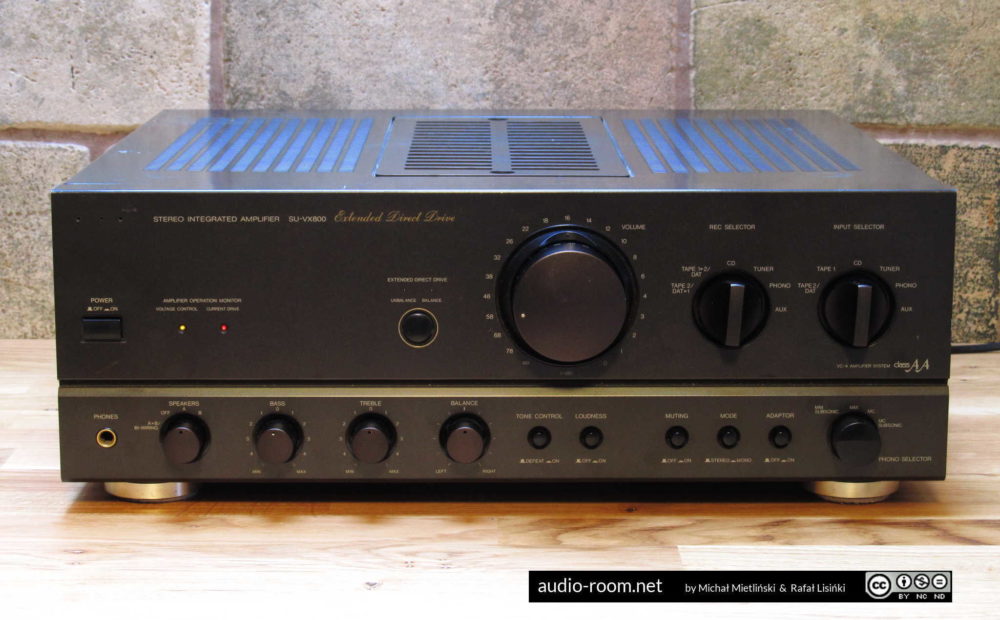

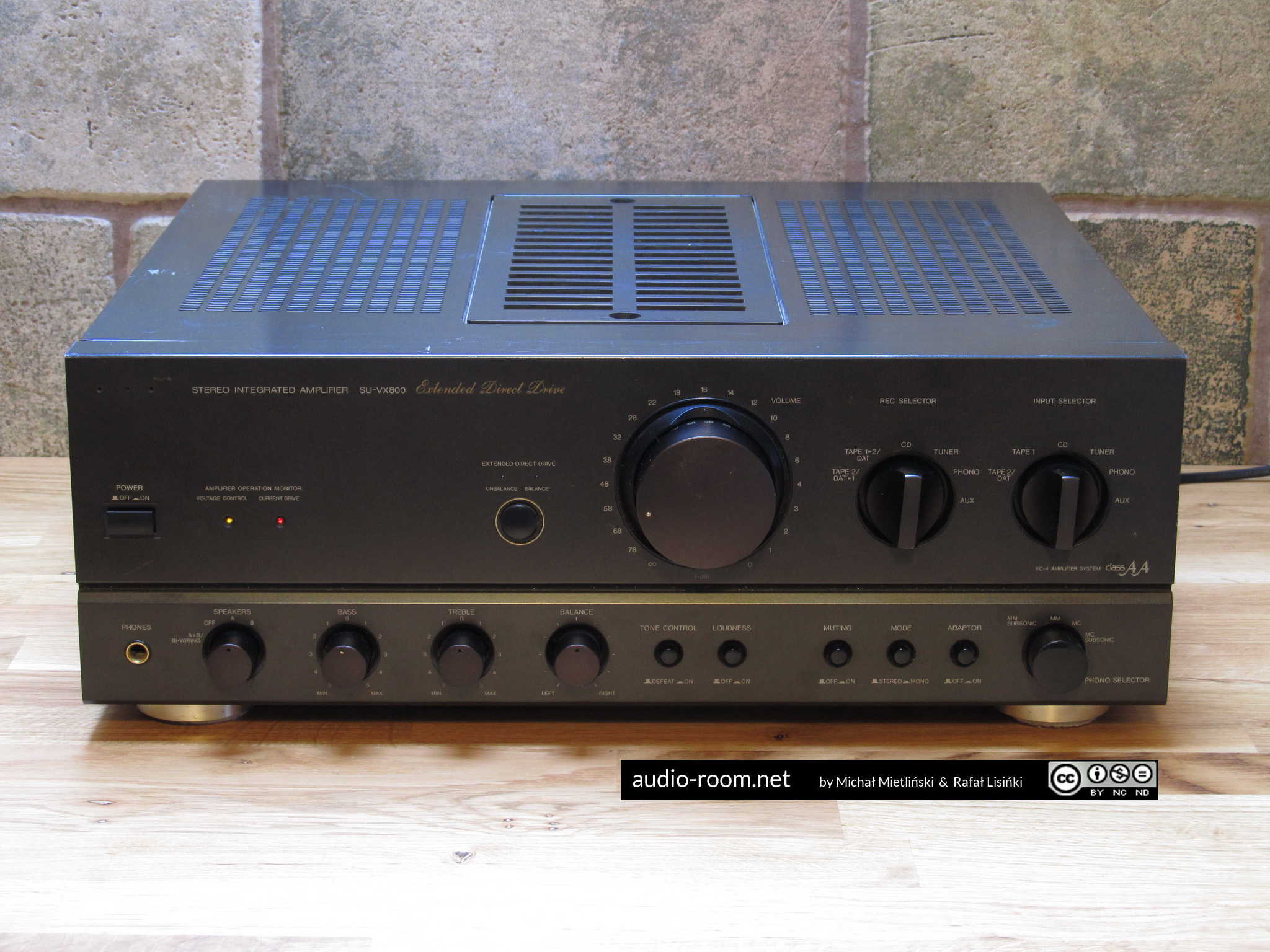

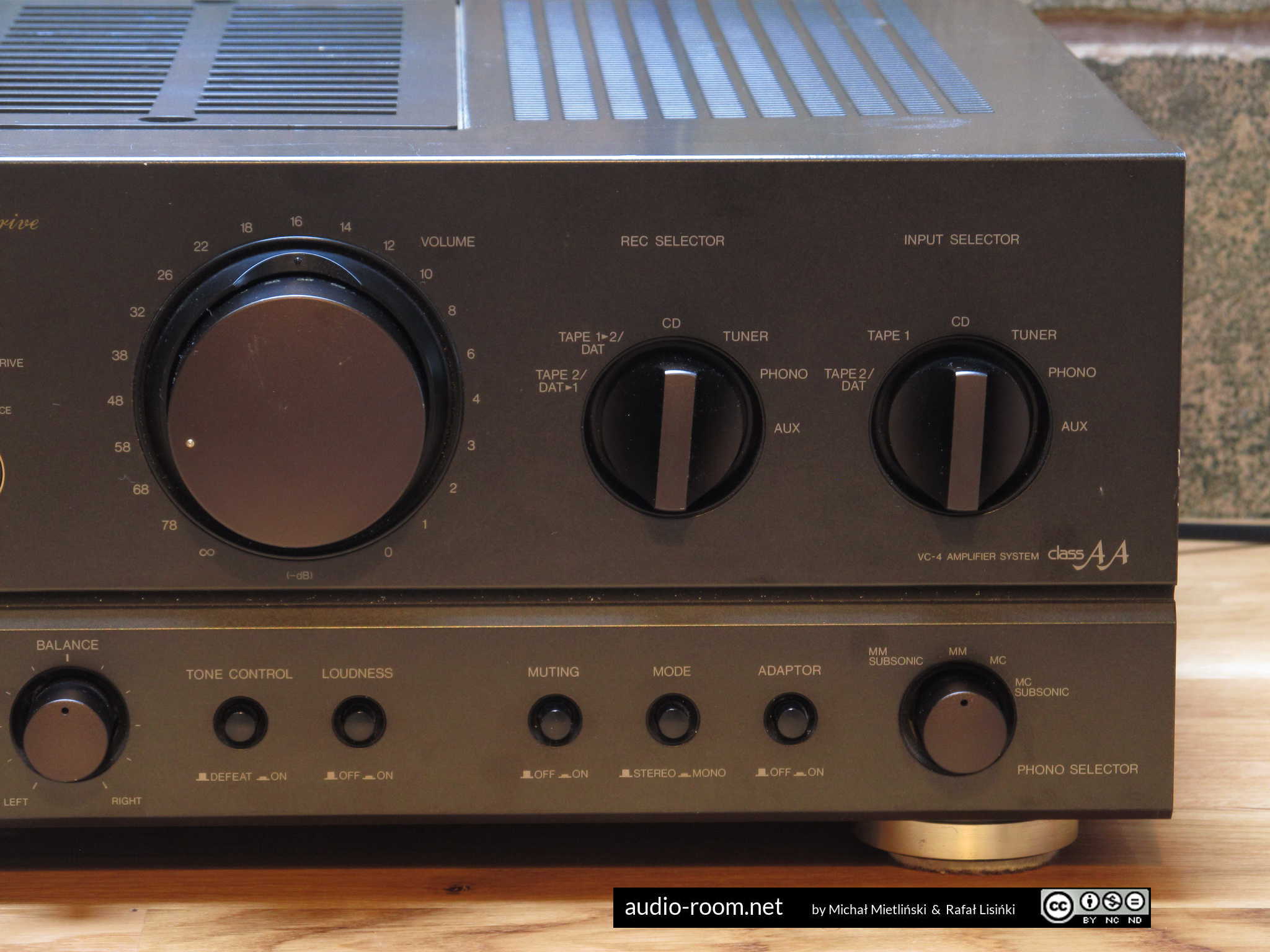



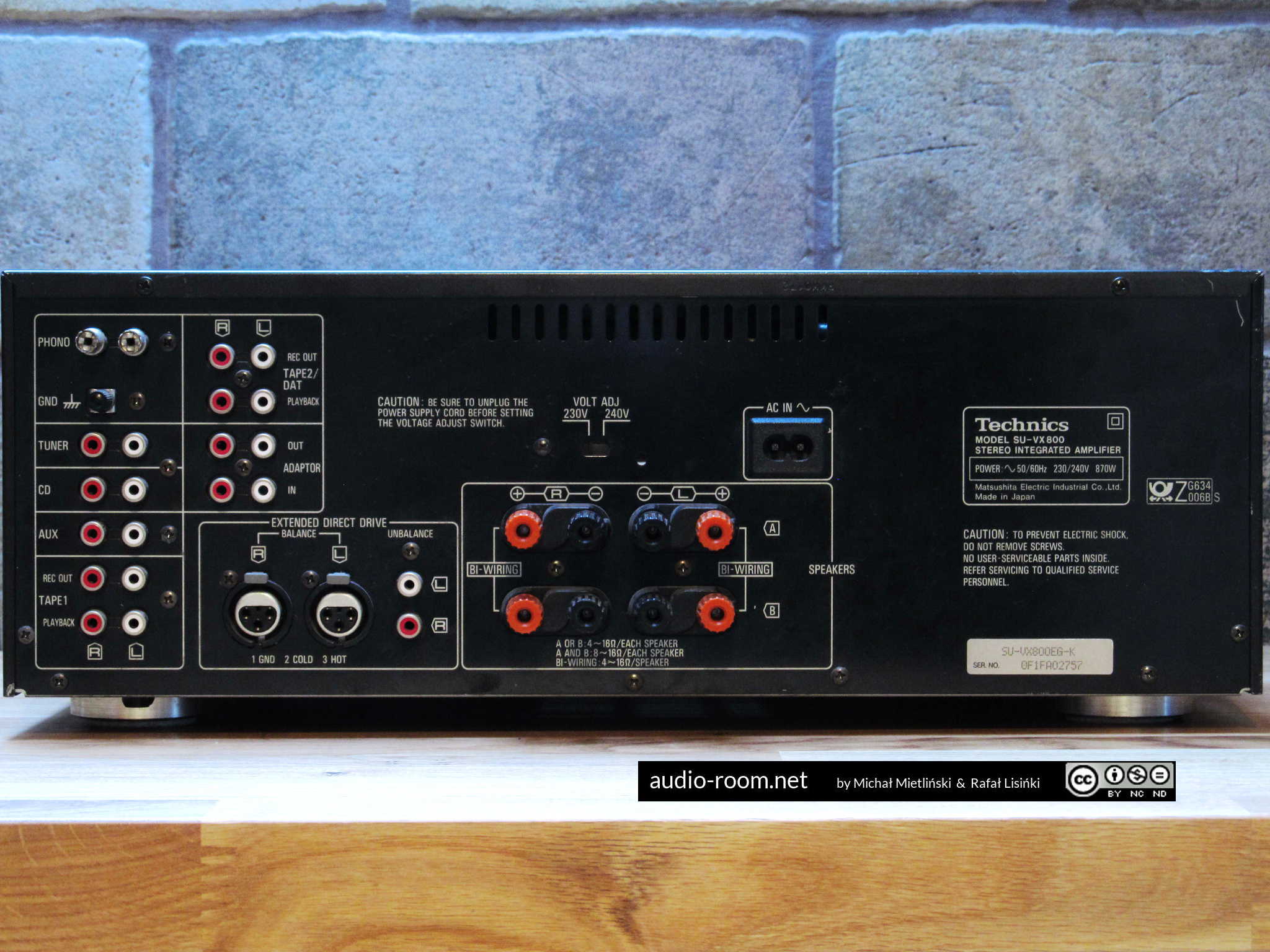



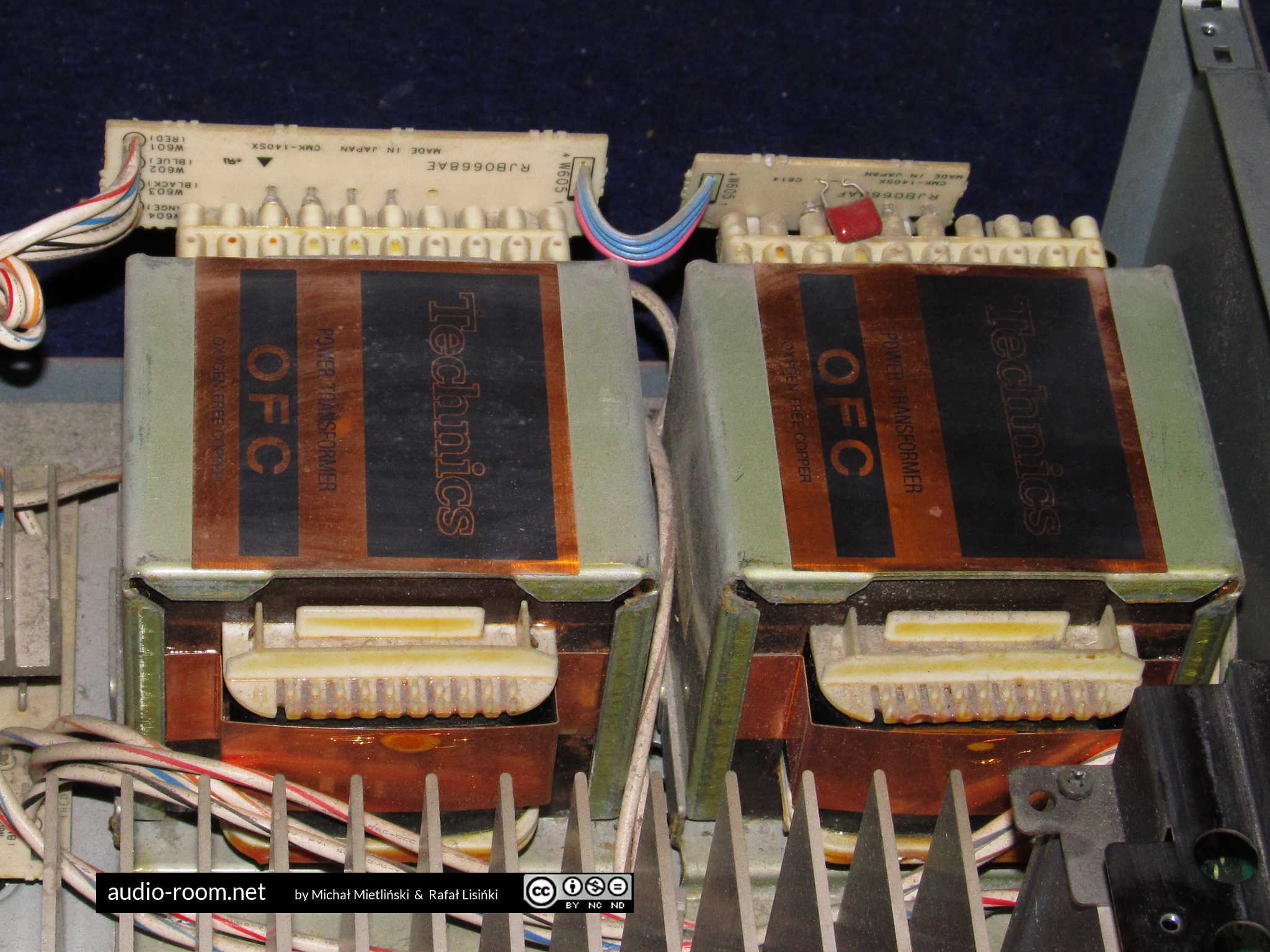



hi am interested to buy it
It’s not ours to sell, the amp belongs to a reader, we only serviced and tested it.
I have exactly the same spec and would like to have it cleaned / serviced.
We could probably do this for you (but you would have to let us know what kind of servicing it needs – is it just normal maintenance or are there any malfunctions?), but shipment costs to Poland and back to you could be prohibitive depending on your location.
Hi, I have this exact amplifier.
The edd engages by pressing it’s button however the sound doesn’t stop when this is engaged… With nothing connected to the edd inputs. Neither XLR nor unbalanced.
Also the adaptor button for a graphic doesn’t cut the sound when it is pressed and nothing attached to the in/out jacks.
I’m thinking that the tiny relays that these functions rely on need a clean.
The one I mean is at the top right of your picture.
Tell me, does the clear cap come off?? Can I just spray deoxit into that and see if the adaptor circuit starts engaging..
I’m simply looking to find out how to clean those three relays..
1 for graphic equaliser (adaptor) button
One for edd on and one for switching between XLR and unbalanced inputs..
Those seem to be the circuits not responding to switches despite the led showing edd engaged and then unbalanced switching to XLR.. yet nothing on the output…
With small relays, it’s usually safer to replace them, opening relays is always risky and small ones are even easier to damage when trying to open them. Cleaning relays by simply spraying deoxit inside is a very bad idea. That can also damage the relay. One way to do it right is to clean the relay contacts only with a strip of paper dipped (but not dripping) in a cleaning agent, and the dry the contacts with a dry strip before closing the relay.
Also, based on your description it actually sounds more like these functions have been bypassed in your amp. Dirty relays would probably still affect sound when the function is engaged, they would just be intermittent. No effect whatsoever sounds like a bypass. I’d check that before doing anything. Look at the underside of the main PCB, under the relays in question, there may be a solder or wire bypass there.
thanks…. yes that’s sound advice, excuse the pun.
I’ve noticed that it has started working now,
I’m thinking its a bad joint on the resistors mentioned, or it is the relay that needs careful cleaning or replacement..
I really enjoy this amp and I’ll have to give it some attention.
I will keep looking out for its symptoms now It is working. It appears to engage the EDD a minute or two after I switch on the amp as I leave it switched to edd.
I have one of these, it all works apart from the extended drive, when I press it with an input connected, no sound at all??
For Extended Direct Drive to work, a source should be connected to one of the two Extended Direct Drive inputs (XLR – Balance, or RCA – Unbalance), and THE SAME Extended Direct Drive input (either Balance or Unbalance) has to be turned on. If that doesn’t work, your amp might need repairs.
Hi, fixed it, it was the 6 resistors inside the front panel needed resoldering, the extended direct drive works now!
That’s great! Bad solder joints are sometimes a bugger to find, glad you managed to locate them.
was it hard to get to the resistors. all I”ve done with mine is remove the shell to peer inside at the main board and identify the small relays with clear shell. I can of course remove the knobs but is there much work to access the resistors…mine works but it doesn’t switch to edd until a minute or two after I turn the amp on. I leave it in edd but it still takes a minute or so to switch across.
Looks like it needs to warm up to get a good contact or to get the right voltages. Not sure it this is a normal behaviour or something that should be corrected. But my friend owns this amp, I’ll ask him to check how his unit behaves when switched on with EDD engaged.
In my friend’s SU-VX800 EDD engages right after turning the amp on, so if yours has a 1-2 minute delay, it means that something doesn’t work as it should. Possibly a bad capacitor somewhere?
Richard I have gotten fed up with the EDD cutting in and out as it sees fit
So I’ve removed the top, removed the top bracing/shroud and can see a bank of 6 resistors joints not far from the edd button.labelled R714 R715 etc …
Removing the front panel seems to require removing the remote switch connectors that have blue plastic slider ribbon and icant see how to do that.
Did you go that far or just touch the 6 resistor joints pairs in situ?
I believe I can access them
Also I have an adjustable temp solering iron that adjusts by digital display on the handle…from 180deg to 450deg celcius.
What’s your recommendation.. seeing as you’ve done this already.any particular temp? I can try 250 as a start..
Yes, you have to remove the remote switch controllers. Download the service manual (unless you already have it), you’ll find instructions for removing these controllers (both ends of the blue ribbon) with images on pages 8 and 9.
Richard do you remember if the Extended direct drive showed the usual led lights above the button as you pressed it but no sound came out?
mine has the led’s switching above the round EDD button as it switches from unbalanced to balanced then to both led’s offf and cycles round again as I press the button again, so unbalanced light is on then that switches to the balanced light then that switches to neither on. was yours doing that when no sound came from that circuit ? I’m trying to see if mine is the same exact symptom as yours.
if by resoldering the 6 resistors, you got the led’s to work and that made the sound come on then our symptoms are different.
if your led’s were behaving normally in reacting to each press of the EDD button yet no sound, then that’s my symptom and yes I do have the connections setup to the unbalanced inputs.
It will be a cold solder joint on the resistors behind the front panel
Could be, although with a cold solder joint it’s usually an intermittent or no sound, not delay.
Richard I have gotten fed up with the EDD cutting in and out as it sees fit
So I’ve removed the top, removed the top bracing/shroud and can see a bank of 6 resistors joints not far from the edd button.labelled R714 R715 etc …
Removing the front panel seems to require removing the remote switch connectors that have blue plastic slider ribbon and icant see how to do that.
Did you go that far or just touch the 6 resistor joints pairs in situ?
I believe I can access them
Also I have an adjustable temp solering iron that adjusts by digital display on the handle…from 180deg to 450deg celcius.
What’s your recommendation.. seeing as you’ve done this already.any particular temp? I can try 250 as a start..
One of my friends has this amp and needed radiators for those transistors without radiator. He modified it.
The amplifier was delivered with a special 1,8 m power cable, with a FIGURE 8 massive connector and a thick 2×1 mmp KAWASAKI CABLE and a 16A plug. In case of second hand, many cables were lost but ordinary cables are compatible. Be careful, the amplifier has high power consumption. If operated at low volume, the 2×0,75/ 2,5A plug does the job ok . Some ( non Europe models and some multivoltage models) where available with the computer type power connector.
True, some of these small transistor tend to overheat and definitely need a heat sink.
Using a fig. 8 AC socket is really unfortunate. Like you said, many people don’t have original power cables and use these amps with ordinary cords made for devices with much lower power consumption. It’s better to either build your own power cable, replace the fig. 8 socket with a computer type connector, or remove it completely and solder the power cable directly to the amp.
The original cable is 2×1,5 mmp with a 16 A plug and a thicker socket at the other end ( also Figure 8 type), was delivered in package when new. Conventional F8 can be used. You will not drive the amp to that extreme to melt it ( and 2×0,75 can handle up to 6A). I put radiators to Q651-654 to avoid burning the board. The amplifier is good, driving heavy speakers. It can drive speakers , which other amps can not. Sound is good, but is more centered to power . Phono section is quite good ! So if you have a PHONO , with MC, this amp is a good choice !
Hi, I bought this unit from a seller on eBay as a spares or repair purchase hoping I could get it repaired when I opened it up the board was split 8n a few places and burnt making it impossible to repair, I also own the SU-V900 Mono Amplifier, 2 x SU-VX700 1 faulty, 3 x SU-VX 600, SU-V660 and finally A SU-C800U Control Amplifier and the SE-A800S Power Amplifier, should I take the 15,000uf Capacitors and transformer’s from the faulty SU-VX800 and buy 2 more 15,000uf Capacitors and get a professional engineer to fit and test them in the SU-V900 as I saw I guy 9n YouTube proposing to do the same thing with one he bought, I could then sell all but the 800s and a couple of 600s as I have read a few reports about how good this model is due to the protection being removed by Technics at the design stage.
Where are you as I need a servicer and maintainer once in a while.
Sorry for the long message.
Regards Stephen.
You seem to have quite a collection of (faulty?) Technics amps. Sorry to hear about your SU-VX800 being terminally damaged. My advice would be to take it and the unit you want to donate its parts to to an experienced technician (or at least consult with one, have him review the service manuals/schematics) to confirm the transplants would be doable and make sense. Not sure if I understand your idea correctly, but if you want to replace parts in your SU-V900 with SU-VX800 parts, you’d have to find another set of SU-VX800 caps and I guess keep the SU-V900 transformers (you definitely want the same parts in both channels in a dual mono amp; SU-V900 might actually have more powerful transformers – each transformer feeding a pair of 12,000 uF caps – than SU-VX800, where 2 transformers feed one pair of 15,000 uF caps, so I’m not sure replacing transformers is a good idea). Also, I’m not sure if replacing SU-V900’s original 12,000 uF caps with U-VX800’s 15,000 uF caps would make a significant change (if any).
I’m in Warsaw, Poland.